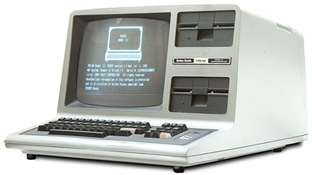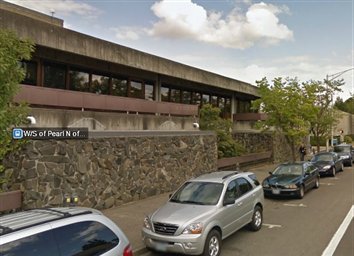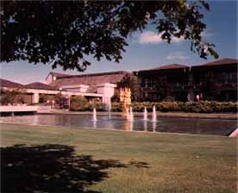Bits and Bytes
In High School I had always been good at both math and art. Somehow my brain is wired to work on both sides of the street, left and right brain. After my third semester at UB when I had returned from Mexico and “dropped out” for a semester, I briefly considered an IBM course of study to get into data processing but Sidney refused to come up with the tuition. I could have entered the computer field in 1963 but it wasn’t to be.
But while teaching math at Middletown, High School, I discovered the computer. The context for this was a bit strange. Here I was living in Maryland near Angela’s home base (Havre de Grace) where her father had worked on the ENIAC computer as a technician. I was teaching intermediate high school math (Intermediate algebra and trigonometry) and an extra assignment, data processing. The latter was really a course in BASIC programming using a dumb terminal for input and output.

It turned out to be a godsend in that now I was forced to learn BASIC and start working with computers. Math was one thing but computer science, well I had taken only one course during my undergraduate studies and it was in FORTRAN. We had to punch out a program on IBM cards and submit a deck of cards to the computer mainframe staff and then wait a day or so to receive our output!
My work at Middletown was a bit different in that it was interactive programming in the BASIC language on some kind of a teletype machine. To learn BASIC programing and stay a step ahead of my students, I enrolled in a local evening community college class in “Intro to Microcomputers” which consisted in basic programming for the most part.
After leaving Maryland, and returning to Eugene, I applied for a job at the local Radio Shack Computer Center. We (Angela, Genessa, and I) had just found an apartment to rent in East Eugene not too far from campus. But neither of us had jobs and we were down to our last dollar, so to speak. When the phone call came in that I was being offered the job, we all literally jumped for joy.
I was interviewed for the position by a Bob Norman, a salesman turned computer instructor. He was changing his position to work on the floor more in sales and wanted to hire his replacement. I told him about my recent experience in Middletown and impressed him just enough to get the job. The position at Radio shack turned out to be the exact stepping stone I needed to advance my career in computer-related teaching.

Radio Shack had just come out with the TRS-80 which was to compete with the Commodore 64 and the Apple I. The TRS-80 Model II and III were also coming out in short order, one after the other. I was assigned teaching BASIC programming, Database Programming, and various operating system course, whatever customers needed to work with the products. The course materials were standardized by Tandy Corporate so I didn’t have to do any course development, just stick to the script and understand what I was saying.
Tandy had employed a famous instructional technologist to design the courses. They used an instructional philosophy based on interactive and action-based instruction. Learning objectives were provided for each class and each lesson. At the end of the interactive experience key concepts learned were summarized. Everything was very systematic. The method was also quite effective.
Tandy had a generous educational benefit. If you were a fulltime employee, they would pay for college courses and for books. We had moved back to Eugene that summer so I could begin my work with Dr. David Moursund at the U of O who had initiated a Master’s Degree program in Computers in Education.” My fulltime schedule at Radio Shack only enabled me to take several courses at a time but I started the program. After 2 years and 2 summers, I had earned the degree.
Almost all the other students in the program had Apple microcomputers (Apple IIs) which I could not afford. However, I was able to keep up with my studies using the TRS-80. I remember struggling learning Pascal and laying printouts of long programs on the floor that stretched all the way across the floor. Significant gaps in my understanding made progress a slow slog. Somehow I learned the language just in time to pass my exams.
When I met with Dr. Moursund, a real gentleman and a scholar, for my oral exams regading the dissertation, he was very encouraging and helpful. The dissertation for the MA degree was on the Radio Shack teaching methodology and the use of microcomputers in training situations like the Radio Shack computer Center where I worked.

Dr. Moursund
After my graduation in 1984, I approached Radio Shack for a raised and a position at a higher level, perhaps at their corporate HQ in Texas but they were not interested. So I applied to Valcom, a different PC Computer Center, now run by Bob Norman. I was hired as the training manager and worked there several months. I heard about a position open at Lane County Regional Information System (RIS) and applied or it and was hired.
The new position was “Documentation and Training Manager” for RIS. The RIS mission is to facilitate the effective sharing of information and technology among governmental agencies in and around Lane County, Oregon. RIS is a regional service provider that offers services to partner agencies as well as to other governmental entities. The RIS partner agencies are The City of Eugene, The City of Springfield, all the Lane County departments, Lane Council of Governments (LCOG), the Eugene Water and Electric Board (EWEB), and law enforcement (Lane County Sheriff, courts, & 911 system).

Lane County Public Service Building, Eugene -- RIS
This was a substantial career advancement and salary increase. Around the same time I began teaching computer science for Linfield College, an adult evening and weekend college that operated out of McMinnville with satellite classes all over the State. Most of my classes were either in Eugene or in Corvallis. I had the full-time salary from RIS and some additional money per month, not much but useful, from teaching at night and on weekends. Thus working two jobs we were able to finally catch up a little bit on our years of low income. I was teaching for the Adult Degree Division which held classes evenings and weekends. So often, after working an eight hour day at RIS, I woud have to drive to Corvallis or Salem to teach evening classes. Ditto sometimes on the weekends.
Linfield College
The teaching position at Linfield enabled me to study and teach a whole set of subjects relatively new to me. I was able to teach “Systems Analysis and Design,” “Database Modeling”, “Java Programming,” “C++ Programming”, “Management Information Systems,” and others. Students were adults working in industry already as programmers or analysts. I particularly enjoyed teaching at Hewlett-Packert (HP) in Corvallis because the students were bright, capable, and motivated.
Eventually the job at RIS was no longer sustainable. Lane County was going broke and funds no longer existed for a documentation and training program at RIS. Political and technical changes called for pulling the plug on the mainframe and decentralizing many RIS functions.
Seeing the handwriting on the wall, I applied for an opening as full-time instructor at Lane Community College. Somehow I must have interviewed well and perhaps they were impressed by my teaching experience at Linfield, but anyway they offered me the position. I started out teaching systems analysis and design, java programming levels 1 and 2, and introduction to computing. Some students called me “Ross-Dos” because I taught an operating systems 1 class (DOS).

Lane Community College
